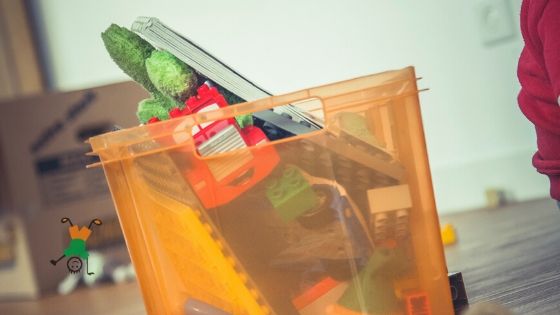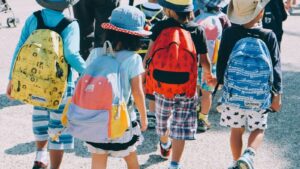The weeks that follow Christmas are always some of the least organized for parents with kids.
You have all the toys your child had before, but now you have all sorts of new toys that you need to find a place for.
But what are you supposed to do? Get rid of all those old toys? Of course not! Your child still plays with some of them and there is no way you want to deal with a screaming little one that realized that the toy they haven’t played with in months but all of a sudden are looking for again has vanished. Talk about a meltdown.
So what steps can you take to help get rid of the clutter and reclaim your home from the toy-pocalypse?
Instead of just stuffing things in a box and taking right to the garbage or local charity, take things in stages.
- Identify the items that are broken or don’t work. They are easy targets as it is easy to explain to your child why you are getting rid of it and they likely haven’t played with it for a while anyway. Whether it is something that is really broken or might just need new batteries, it still is much easier to justify getting rid of a toy if it is hard to play with! You might be surprised how much broken stuff you actually have and it might put a pretty big dent into the mess.
- Go to the bottom of the toy bin. Whether you have shelves or an actual box/bin, there is a reason these things have faded to the bottom. These toys are ones that haven’t been touched in quite some time and will likely go unnoticed. However, don’t just race off to your favorite local Kenosha charity. Put these items in a box or container and store them somewhere for a few months. This will give you that nice little buffer in the case “Mom, where is my favorite toy?” question comes up. Don’t let your child see where you get that item, however. Just chalk it up to “Mom Magic” and move on from there!
- Get your child involved. After a few months, you will have a good idea as to what items are ready to be shipped off! I know… it probably seems crazy to bring your child into the process at this point, but we think it’s an important step. Bring up the toys you have stored away and explain to them that there are other little boys and girls that would love to play with their old toys. Let them rummage through and pick out one more item they get to keep and bring them along to donate the rest. It is such a beautiful lesson in sharing and caring for your child to experience kindness and sharing. Some children might not take this lesson very well at first, but over time, they will start to see how important it is to be kind to others and share their things.
While this process is clearly good for the parents to get some order back to the house, it is actually beneficial to the child as well. Studies show that fewer toys actually raises the quality of play among toddlers. Fewer toys give them less distraction and allow them to focus on one thing at a time!
Hopefully, these tips will help you get everything back in order and allow your child to have an overall better play!



